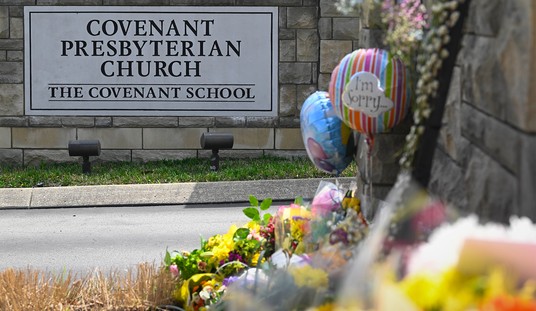Emergency room patients at three Long Island hospitals will soon be asked whether or not they own a firearm, and your tax dollars are going to help pay to collect the information provided. Northwell Health says the effort is part of a new screening program that is supposedly going to analyze the risks of gun ownership in patients, and the program’s being funded by a $1.4-million grant from the National Institutes of Health.
The CEO of the hospital system says while the pilot program will focus on three hospitals to start, eventually they plan to start questioning ER patients at every one of their hospitals.
The New Hyde Park-based health system said the grant is part of its “We Ask Everyone About Guns” research study, which approaches firearm injury risk similarly to other health risk factors that are part of routine care, like smoking, substance use and motor vehicle accidents.
“Gun violence is a public health issue,” said Michael J. Dowling, the president and chief executive at Northwell Health. “This is the health industry’s responsibility to talk about this and do something about it.”
The study will initially establish evidence-based screening and intervention strategies within three of Northwell’s hospitals: Cohen Children’s Medical Center in New Hyde Park, South Shore University Hospital in Bay Shore, and Staten Island University Hospital. South Shore changed its name from Southside Hospital earlier this month.
Northwell Health has been pushing the idea of declaring gun violence a “public health epidemic” like the flu or COVID-19, only in this case it’s a bullet that the company views as the virus. In a 2019 blog post, Northwell elaborated on their new approach to pushing old gun control ideas.
“Guns don’t kill people; people kill people,” is a scientifically inaccurate statement, says Hargarten. Guns do not, in fact, kill people, but the bullets certainly do. “The kinetic energy from the bullet is the ‘agent,’ much like the HIV virus is the agent that causes AIDS,” he explains. “The bullet and the kinetic energy it transmits to the body tears and destroy cells and tissue, damages organs, breaks bones and leads to disability or death.”
The disease model, Hargarten says, is how researchers and public health and medical professionals studied and addressed the staggering numbers of motor vehicle injuries and fatalities. “We scientifically investigated crashes and motor vehicle fatalities and learned that attenuating the kinetic energy release reduced injuries and death.” In other words, driving at slower speeds, requiring seatbelts and car seats, adding airbags, even redesigning on-ramps and road curves, contributed to a steep reduction in motor vehicle fatalities since the 1970s. With guns, Hargarten says, maybe interventions can include limiting the rate at which a gun can release bullets. Or limiting how many bullets it can release—aka restricting access to automatic weapons, “bump stocks,” and high-capacity magazines.
This is nothing more than the standard gun control agenda dressed up in a lab coat and stethoscope. Rather than conducting research into things like why shootings have increased in New York despite the state’s sweeping gun control laws, the medical professionals have already diagnosed the problem: legal gun owners and the Second Amendment. They could investigate why violent crime and homicides steadily declined for more than 25 years even as the number of privately-owned firearms continued to rise in the United States, but that wouldn’t fit their anti-gun agenda.
When Congress approved spending $25-million to research “gun violence as a public health epidemic” back in 2019, Second Amendment advocates warned that this would amount to taxpayer-subsidized gun control, and it looks like that’s exactly what is happening. This isn’t pure scientific research that’s being conducted, but anti-gun advocacy in the guise of public health.









Join the conversation as a VIP Member